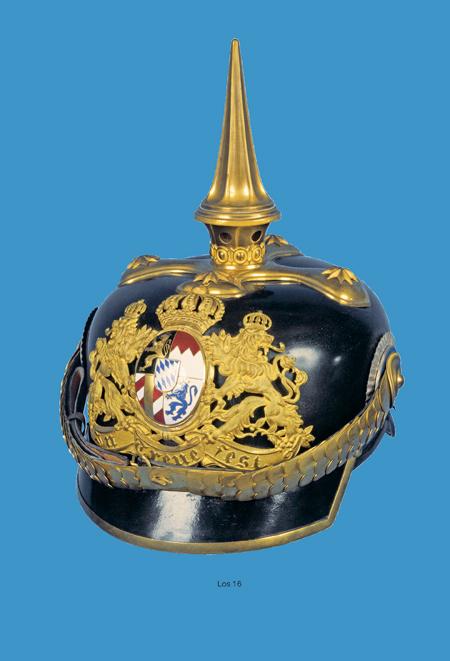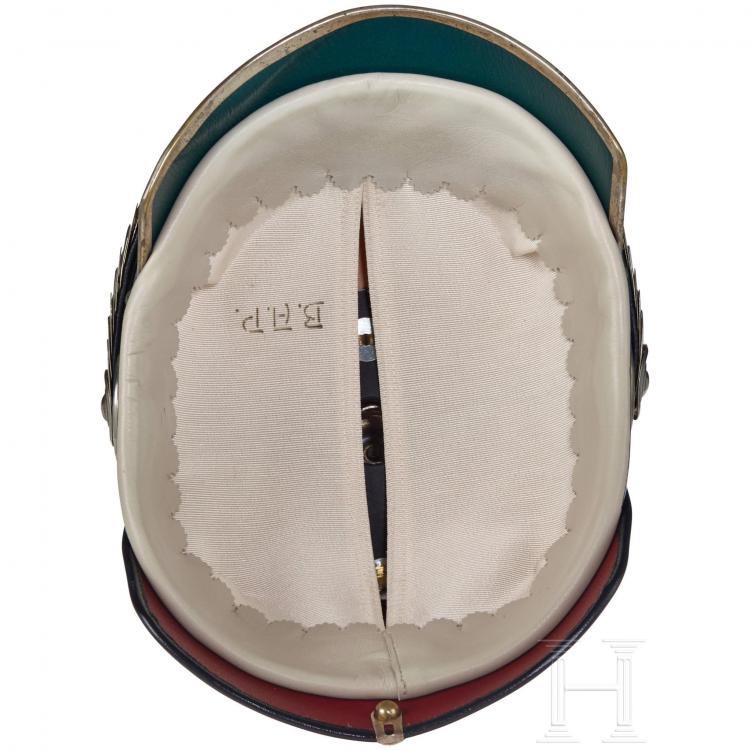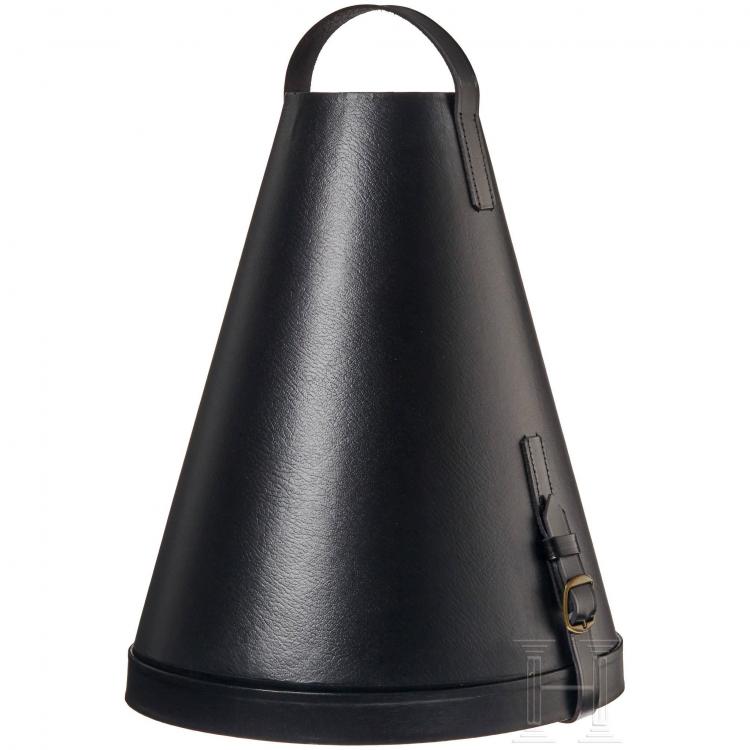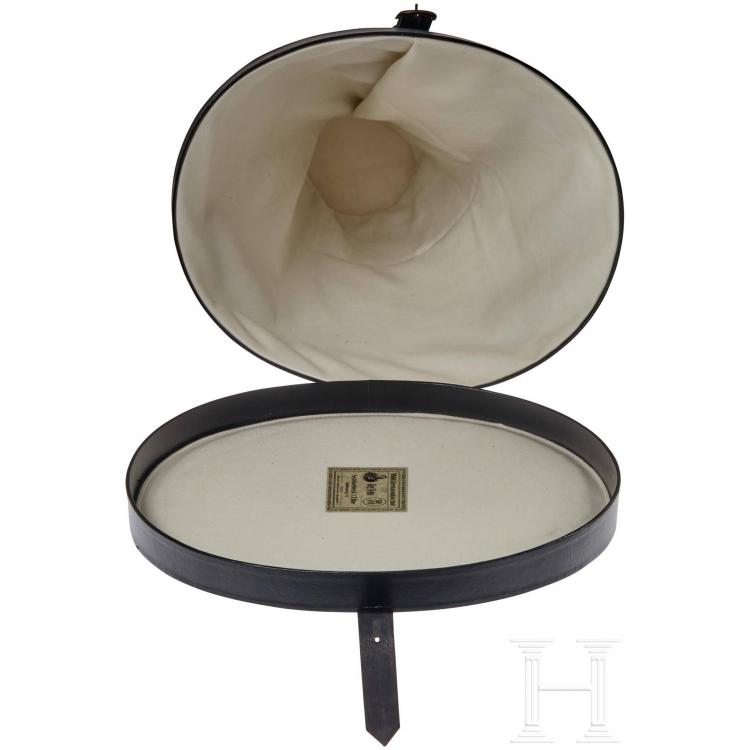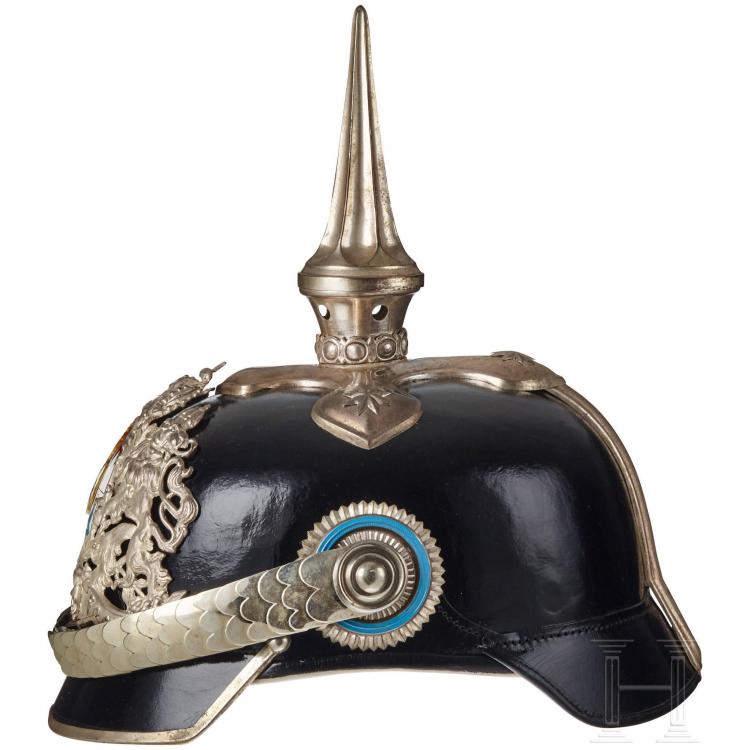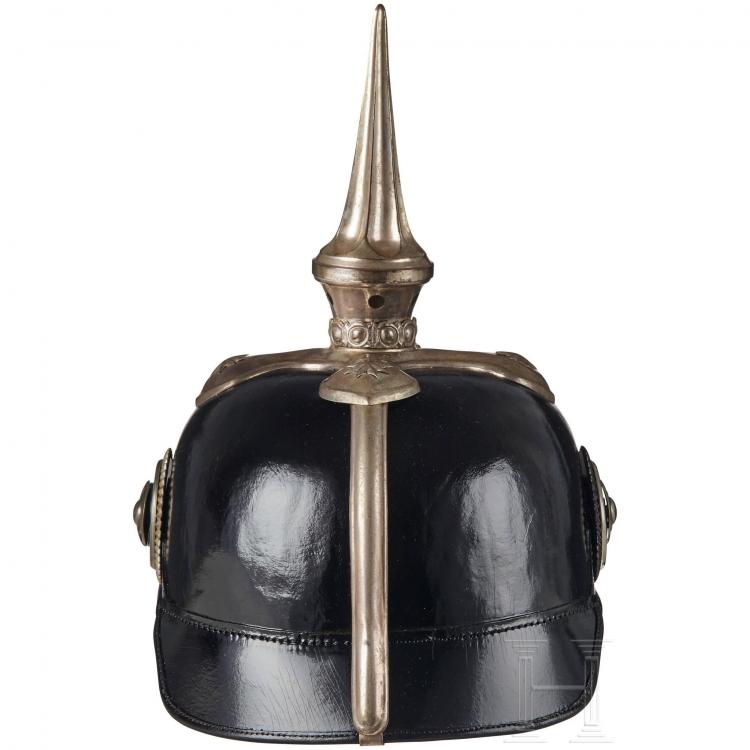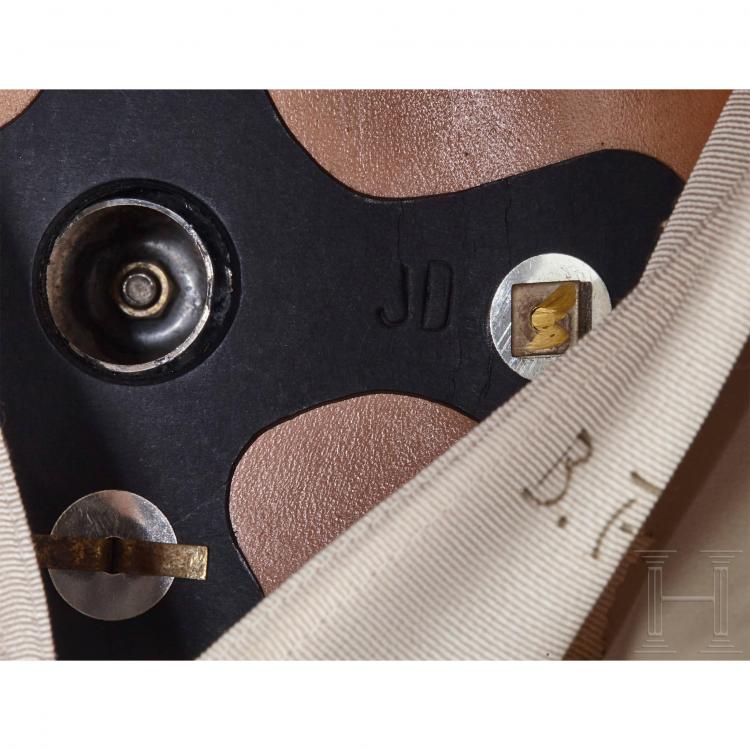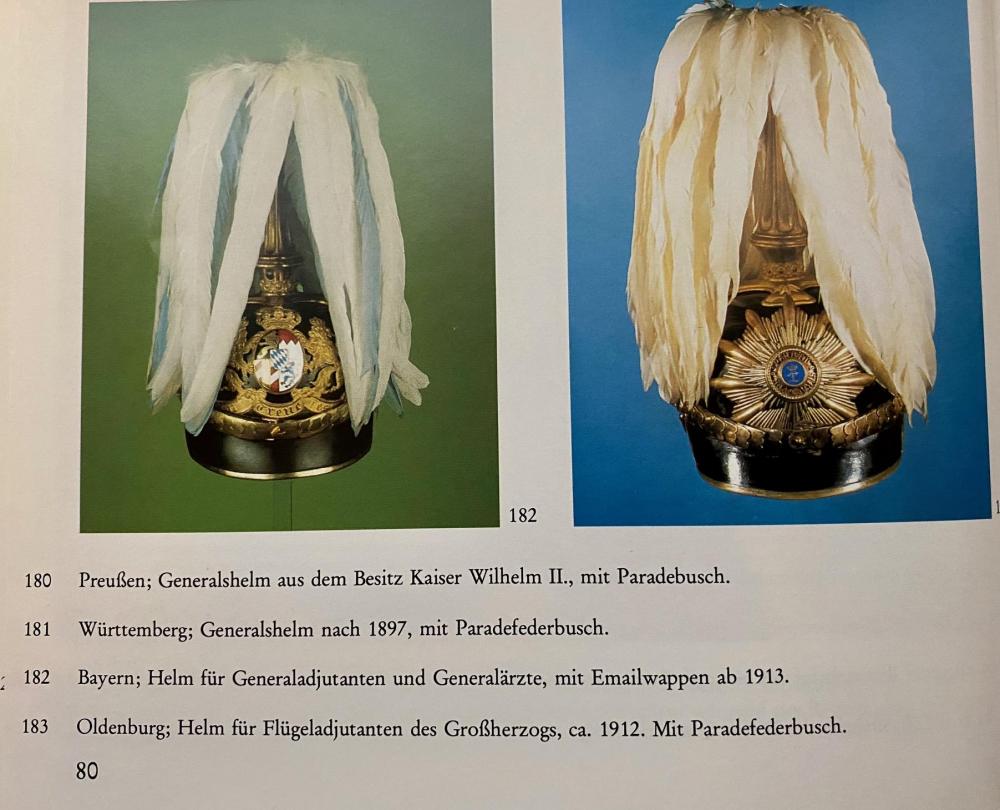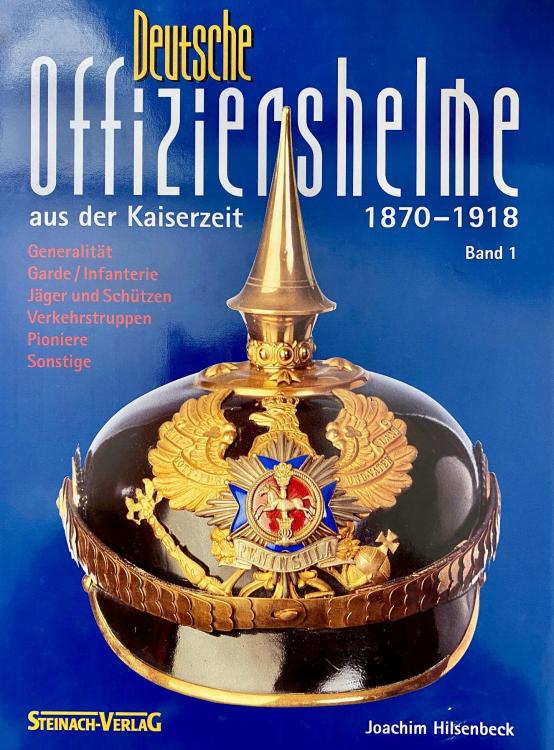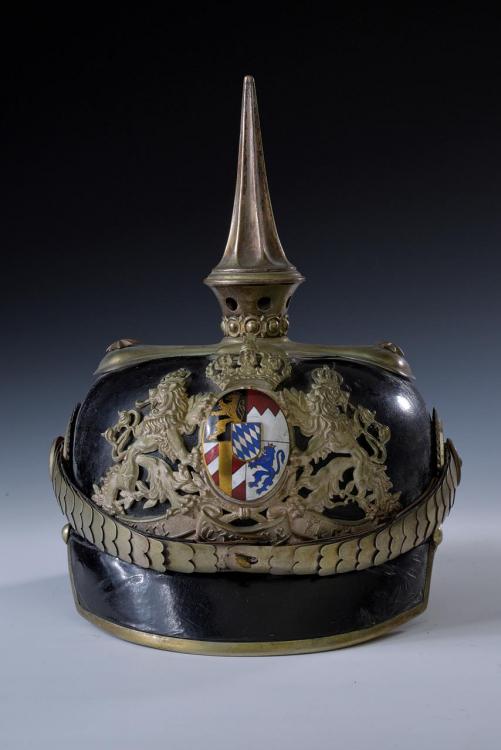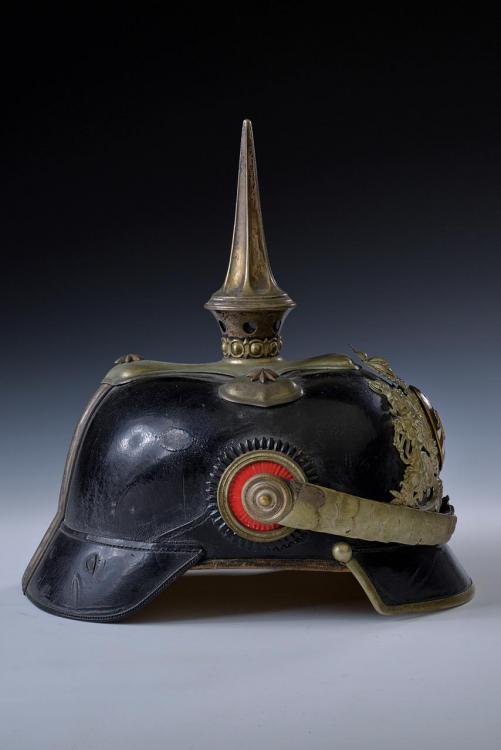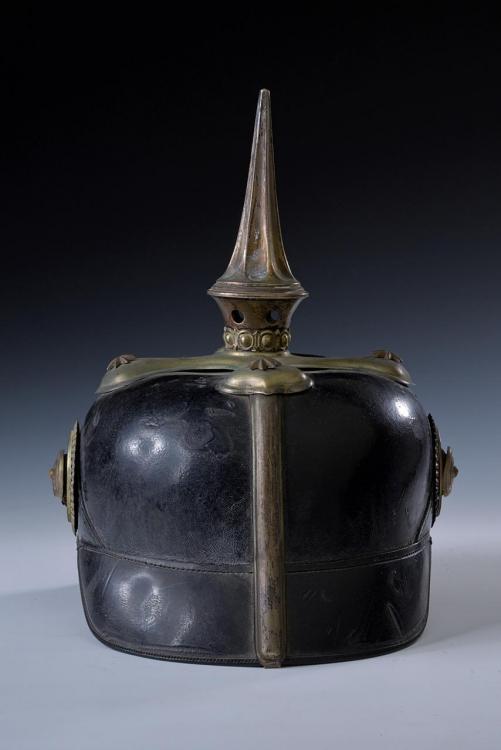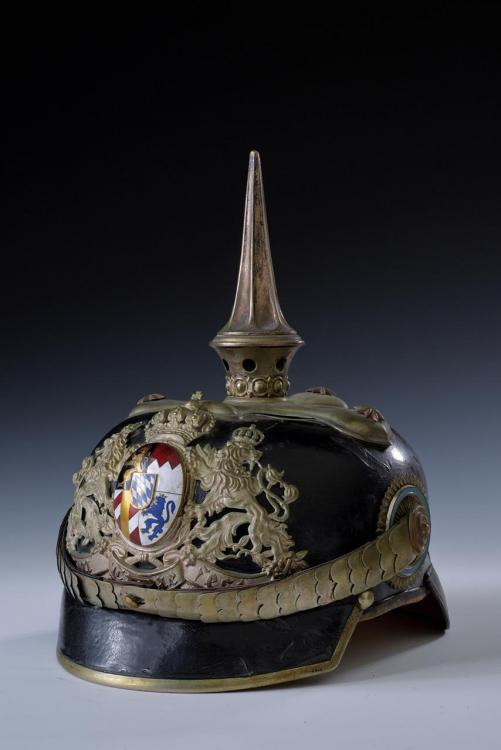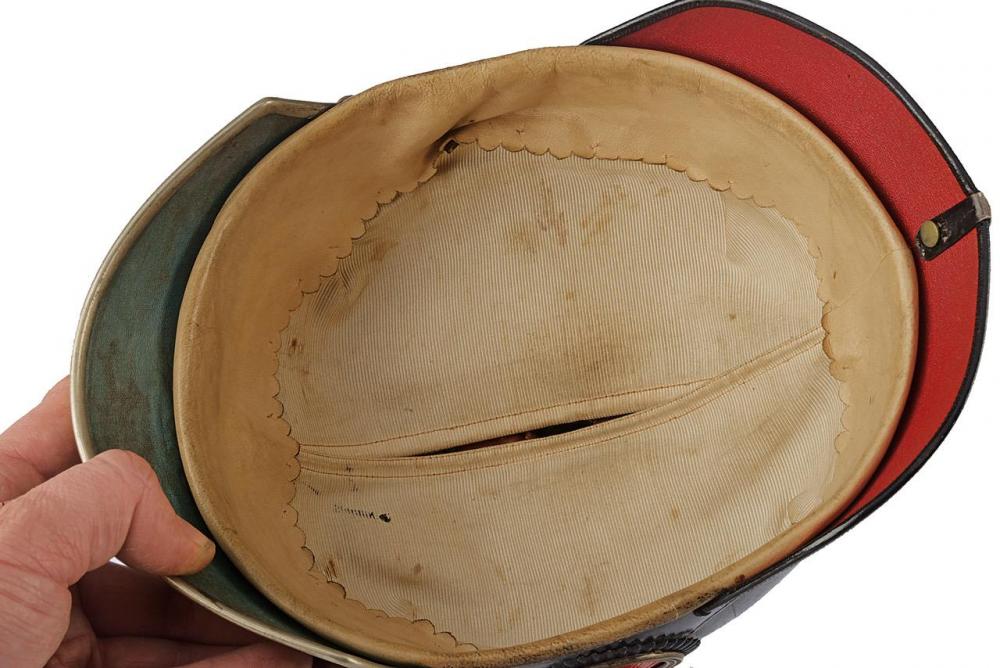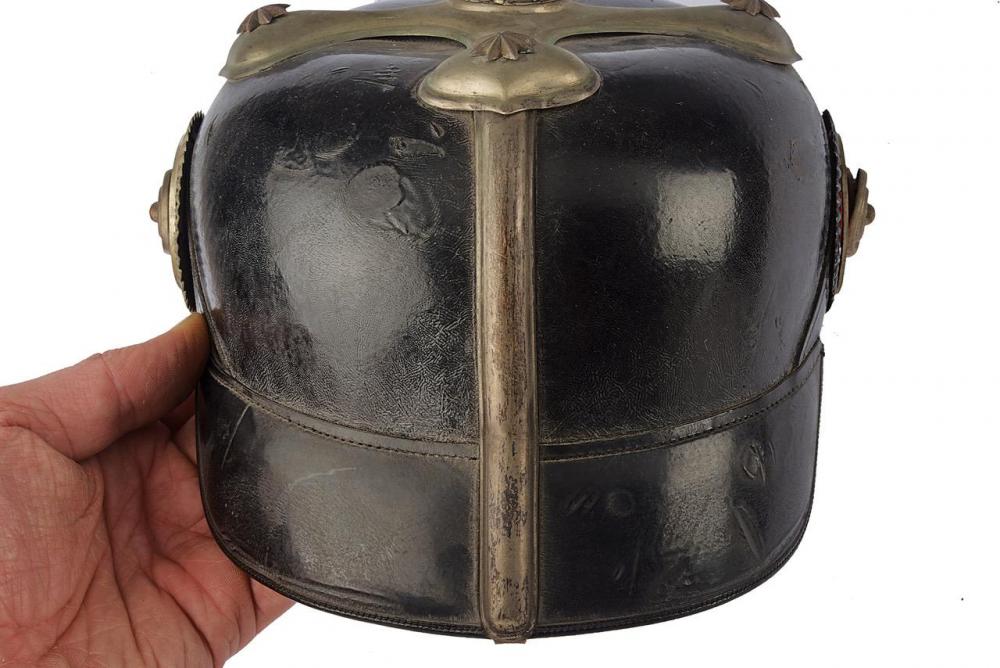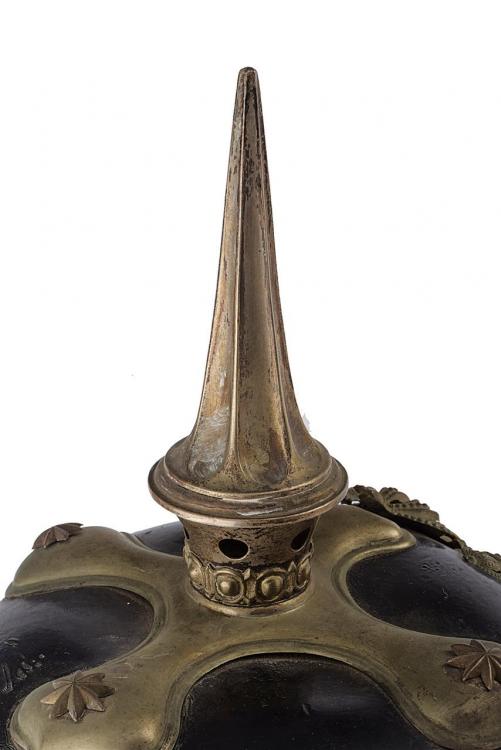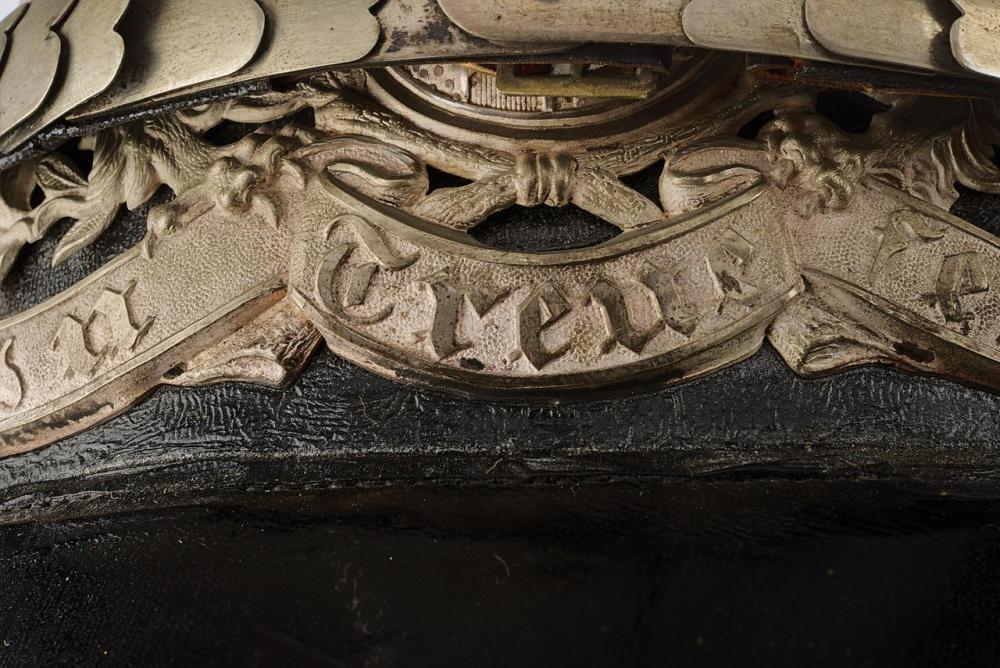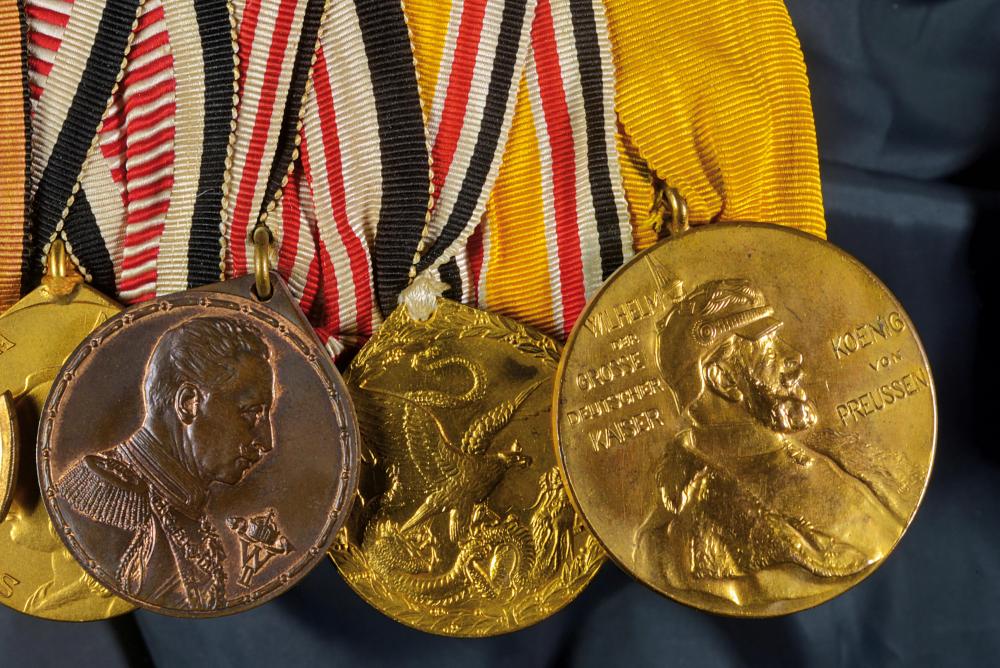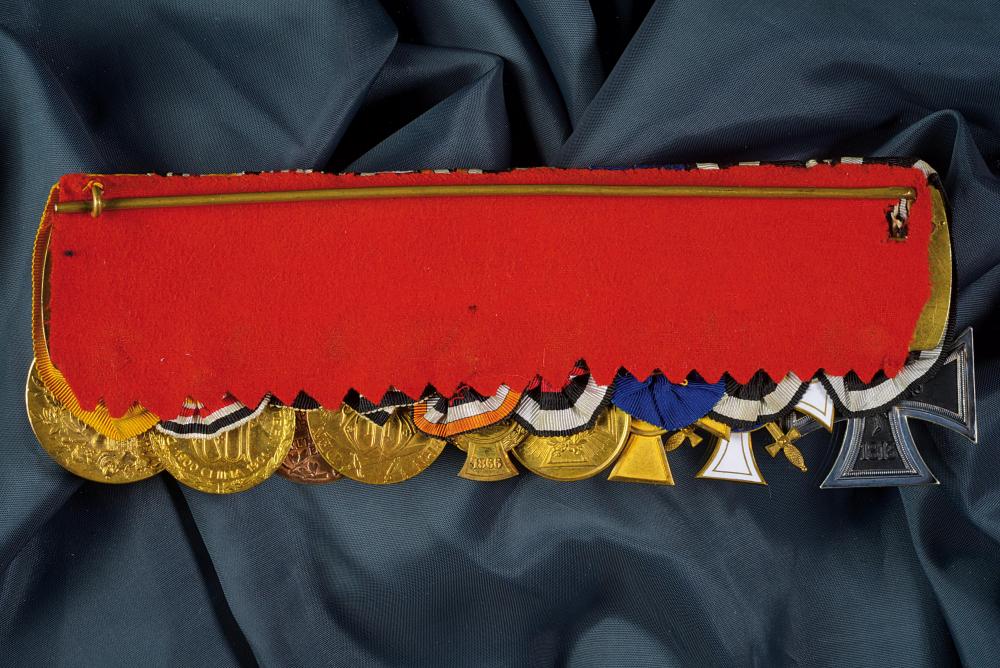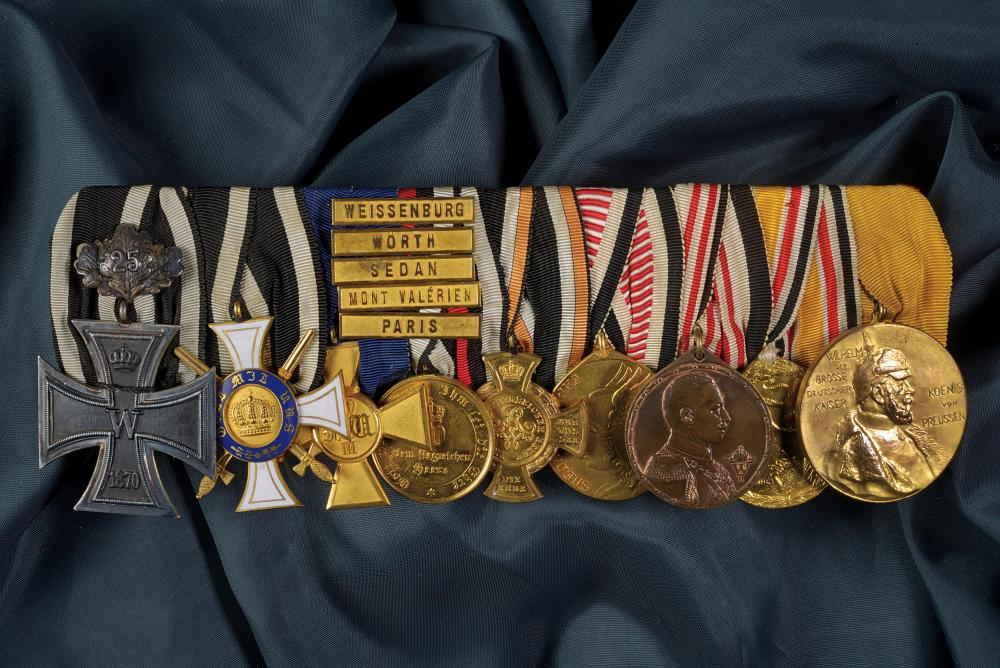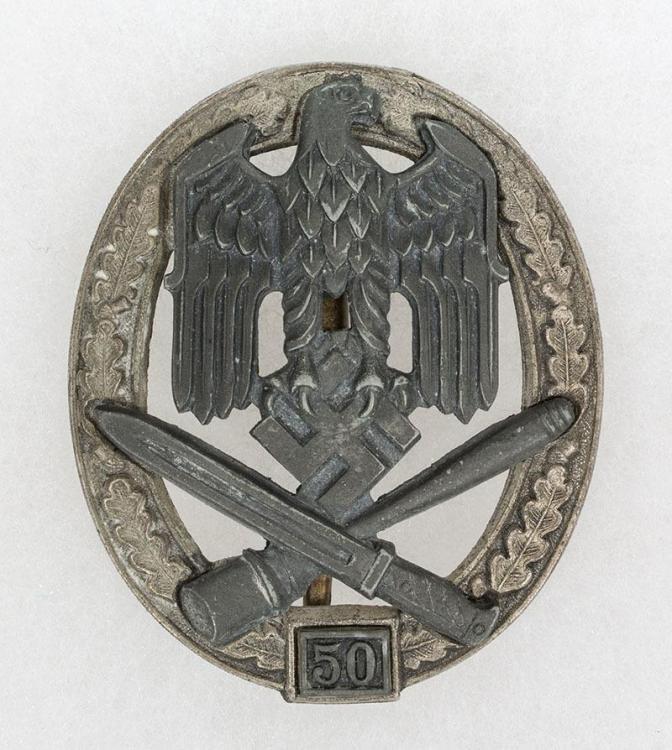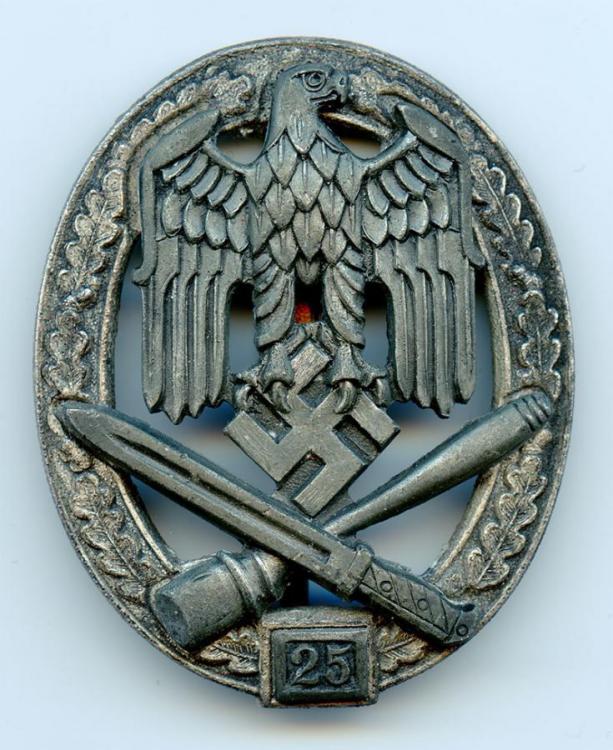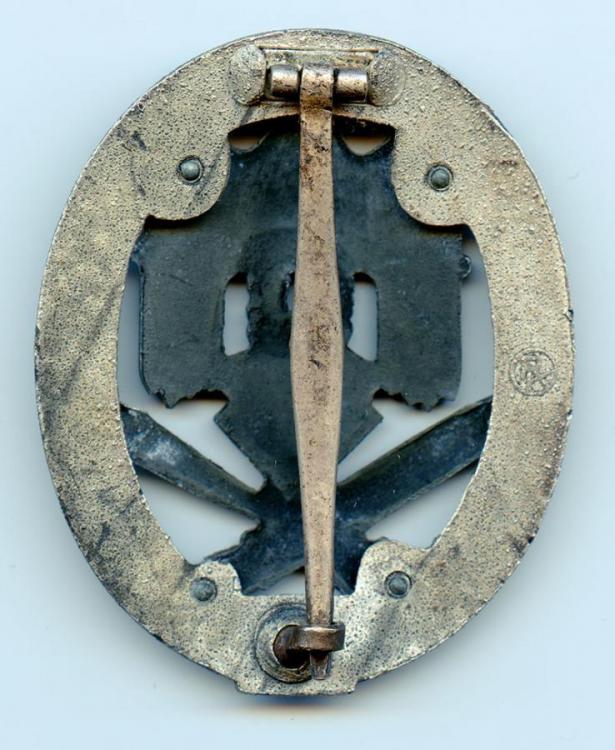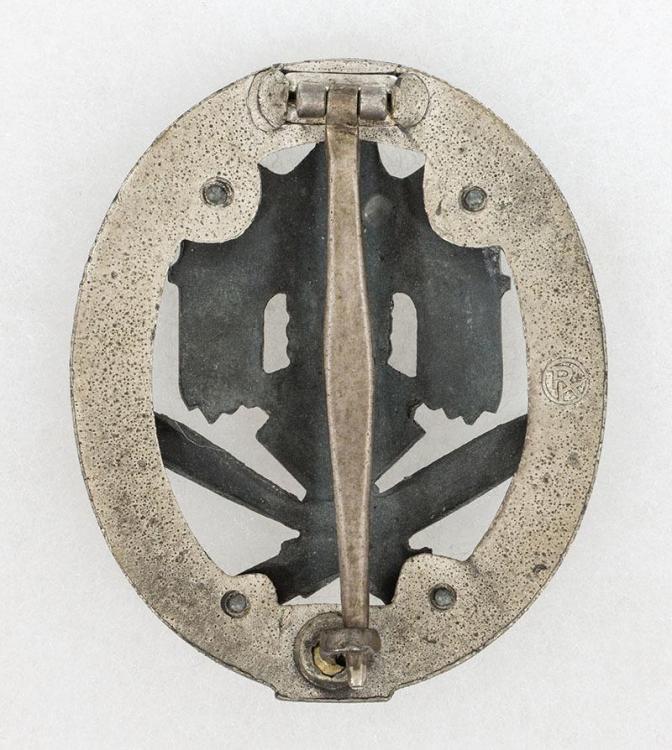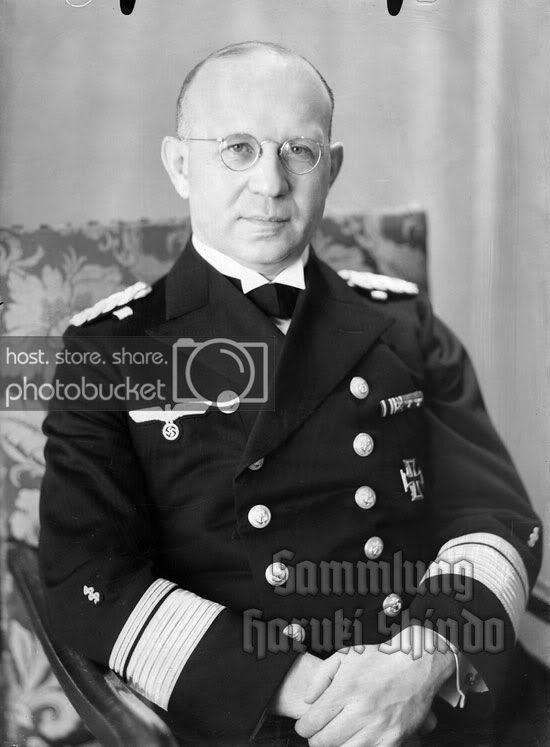-
Posts
2,868 -
Joined
-
Last visited
-
Days Won
20
Content Type
Profiles
Forums
Blogs
Gallery
Events
Store
Everything posted by Claudio
-
Ciao Sandro, Thanks for your detailed reply. Yes, I saw the Pickelhauben on the notorious German dealer. I don't like them because of their conditions and also the first (the most expensive one, Eur 8'500.-!!!) has 3 holes but 4 prongs that, in my opinion, only 2 of them (the lateral ones on the left and right) are used to fix the emblem. Both W's helmets have a different frontal emblem then the one showed by me laurels leaves under the lions. I like the second W's helmet better but the conditions are a bit "salty", the leather helmet on top a bit deformed, as well the rear visor and the surface is quite heavily cracked. This helmet is being offered by an auction house. I'll PM you the details. Therefore I could ask them to remove the emblem, but I seriously doubt that they would dare to do it. But of course I learned that in doing so you could really tell about "Doppellöcher", some restorations to the emblem (new prongs to the rear of emblem), the kind of prongs (if original or new ones) and least but not last if there are holes which have been "closed" and some new ones being made lately. Practically a mine field... There some very good put together helmets or "improved" ones with rarer emblems (also original some copies) on the marked. Thank you again, Sandro, for your interesting comments, though. Cordially Claudio
-
I found this on Kube's auction catalogue... but the "Beschläge" the colour of the emblem, of the spike and chin scale is Golden not Silver, though. Found also this one on Ratibons'... The description is quite generic not specific and the are no laurels leaves under the lions. No price neither. I also found this one on Hermann Historica website with the same emblem (see laurel leaves), although it is described as a copy, and you can see it buy the quality of the helmet outside and inside and the brand new box for storing it. Auction house's description: Description Black leather: body, front visor with green underlay and rear visor with red underlay, silver officer Bavarian Lions with centre enamel emblem on front plate attached with two screw posts with nut fasteners; silver: fluted spike, cross base, star studs, rear spline and front square visor trim; silver rounded scale chinstraps attached with officer rosettes; officer national and Bavarian cockards; white silk lining with white leather sweat band; with tall carrying case. Museum Quality Copy. Zustand: I -
-
Dear collecting friends, No, I don't know yet who might have worn this bar, but I think it must have been a general. I really like how it has been mounted and the conditions of the medals and the "Feuervergoldung" of the battle bars (Gefechtsspangen). By the way there was a thread, I think of Rick (Lundström RIP), about these battle bars and the research by the combinations of these bars to a specific army corps. I can't find it; somebody could post here a link of this thread? Thank you. Sincerely, C
-
Dear forumites,I saw this beautiful piece of Bavarian headgear for Generals. I have bit of concerns about the emblem of this helmet, because it's like a mix of a earlier style of emblem (with laurel leaves beneath the lions) and the late helmet model with the enamelled Bavarian coat of arms in the middle. I'd like to share the pictures with you and thank you very much in advance for your kind comments. Best regards, C
-

2 numbered RK GABs for your opinion
Claudio replied to Claudio's topic in Wehrmacht Medals, Decorations & Awards
Thanks John! I also particularly like the 25, it is a piece in very good conditions. C -

2 numbered RK GABs for your opinion
Claudio posted a topic in Wehrmacht Medals, Decorations & Awards
Dear forumites, What do you think about these badges? How much is the real market price of such badges? Thank you very much in advance for your precious inputs and opinions. cordially C -
Wow! Beautiful... you can see that the crown on the RAO is correct in shape/design, material and patina. Is the ring which hold the bow (Bandschleife) on the RAO in Gold? Usually they were on the large medal bars (Grossordenschnallen) or when these awards were issued/bestowed (before WWI/1916). Nice also the unusual over-sided crown on the last ribbon; are the narrow stripes on the sides green or light blue?
-
Also very interesting a couple of scenes in the very well made movie "Der Hauptmann von Köpenick" with Heinz Rühmann , where a Sergeant (I suppose, I can't see his uniform into details) is waiting to get his well deserved promotion to Vizefeldwebel... watch from 45:40 onwards and from 55:40 to 57:30. When Chris asked that question (difference between a Sergeant/Wachtmeister and Vizefeldwebel), I immediately thought of these scenes in this movie (sorry I found only the German version, actors also speak with a Berliner accent). Apparently it wasn't so easy before WW1 for NCO: it took really long to get to the next promotion. C
-
Hi Chris, I think you can already find the answer here: Wikipedia Vizefeldwebel (explanation in German) August Wolter als Vizefeldwebel (Zahlmeisteraspirant) kurz vor seiner Beurlaubung in Straßburg 1913 In Preußen und im Deutschen Kaiserreich war der Vizefeldwebel (veraltet Vice-Feldwebel, auch überzähliger Feldwebel) ein Unteroffiziersdienstgrad bei den Fußtruppen. Ihm entsprach bei den berittenen Truppen der Vizewachtmeister. Der Vizefeldwebel rangierte zwischen dem Sergeanten und dem etatmäßigen Feldwebel und war der niederste Unteroffiziersdienstgrad mit Portepee. Der Rang wurde 1846 in der preußischen Landwehr und in Ersatzformationen eingeführt, 1873 im gesamten Heer. In Kompanien mit nicht mehr als zwei Offizieren fungierten Vizefeldwebel als Zugführer – eine Dienststellung, die allgemein einem Leutnant oder Oberleutnant oblag. Schon vor der offiziellen Einführung war die Bezeichnung Vizefeldwebel als militärinterne Sprachregelung für die überzähligen Feldwebel gebräuchlich. Zu überzähligen Feldwebeln befördert wurden überwiegend die sog. Einjährig-Freiwilligen in ihrer Eigenschaft als Offiziersanwärter der Reserve (Offizieraspirant) nach bestandener Offiziersprüfung. In die Reserve entlassene Sergeanten konnten ehrenhalber zum überzähligen Vizefeldwebel (bis zu dessen Einführung: überzähliger Feldwebel) ernannt werden. Ihnen gegenüber standen die etatmäßigen Vizefeldwebel bzw. Vizewachtmeister als Berufssoldaten, zu denen Unteroffiziere und Sergeanten nach vorwurfsfreier 15-jähriger Dienstzeit befördert werden konnten. Um begriffliche Verwechslungen zu vermeiden, etablierte sich später die Bezeichnung außeretatmäßiger Vizefeldwebel für die Reserveoffizieranwärter; der Reserveunteroffizier wurde nun als überzähliger Vizefeldwebel tituliert. Wie alle überzähligen und außeretatmäßigen Dienstgrade führten sie zwar Rang und Dienstgradabzeichen des etatmäßigen Pendants, bezogen aber nicht deren höhere Löhnung. Als Dienstgrad der Reserveoffizierslaufbahn war der Vizefeldwebel (mit bestandenem Offiziersexamen) dem Portepee-Fähnrich der Berufsoffizierslaufbahn des Heeres gleichgestellt. Die aus dem Unteroffizierstand hervorgegangenen etatmäßigen Vizefeldwebel waren ihnen nachgeordnet. Vizefeldwebel konnten nach vierjähriger Dienstzeit in die Dienststellung eines Offizierstellvertreters aufrücken. Der Vizefeldwebel legte die Uniform der Sergeanten an, führte zusätzlich aber den Offiziersdegen mit Portepee am Mannschaftskoppel. Der etatmäßige Feldwebel bzw. Wachtmeister führte zur äußerlichen Unterscheidung von den Vize-Dienstgraden seit 1889 eine zusätzliche Metalltresse über den Ärmelaufschlägen. Wikipedia Sergeant (explanation in German) Preußischer Sergeantenknopf In der preußischen Armee wurde der Rang des Sergeanten 1843 wiedereingeführt, nachdem er zwischenzeitlich abgeschafft und teils synonym mit dem Terminus „Feldwebel“ verwendet worden war. Der große Adlerknopf als Rangabzeichen am Kragen, im Soldatenjargon auch Schwungrad genannt, kam erst 1846 auf. Im Kontingentsheer des Deutschen Kaiserreichs rangierte der Sergeant nach den Portepee-Unteroffizieren und stand zwischen dem Corporal bzw. Unteroffizier und dem Vizefeldwebel. Ein Unteroffizier konnte frühestens nach 5 1/2 Dienstjahren zum Sergeanten befördert werden. Allerdings war der Sergeant kein regulär zu durchlaufender Dienstgrad zwischen dem Unteroffizier und dem Vizefeldwebel; zum Sergeanten rückten lediglich längerdienende Funktions-Unteroffiziere (z. B. als Sanitäts-Sergeant, Ausbilder oder Korporalschaftsführer) auf. Ein Infanterieregiment hatte etwa 48 etatmäßige Sergeanten. I hope this can help. Cheers, Claudio
-
Hello, Here's Konteradmiral Hugo Caanitz brief biographical data. As you can see he served quite a lot in the Baltic area, it is possible that he could receive an order of a bordering country on the Baltic sea. Usually after the long service awards predominantly foreign awards were put on the ribbon bar. But it could be also possible that he wore his DRK award in the last position on his ribbon bar. Strange nevertheless... I post also a picture of him discussed in another thread on the WAF (see below). BR C PS: I sincerely hope that the owner of this picture hasn't anything against for me posting it.
-
I don't have any problems with that... considering that the ribbons are 8mm wide (!!!) and the devices extremely small (8mm), it's impossible that they are as accurate as normal and bigger devices put on 15 mm wide ribbons. Of course if you enlarge the very detailed picture I took, it looks as if the devices are crudely made, but taking into account that they are so small, you can't pretend that the level of detail is similar or better than on bigger devices. Furthermore the devices from the 7th to 12th and 14th ribbons are very likely custom made, because they are very rare to be found. The swords devices are WWII (war) time types as this bar was put together after 1940 as the Duke got his KVK2X. In my collection (I'm collecting since 40 years) I have different types of swords devices... they can vary from very detailled and high quality pre WWI silver devices to more crudely made WWII types. The most important thing is that I'm happy with this ribbon and that I'm going to keep it anyway. Best regards, C
-
IMHO this ribbon bar looks like a typical Godet, which I have several in my collection, ribbon and medal bars. The hinge of the pin on reverse like also the fabric and kind of stitching does all look like the even the same person who worked at Godet did that. This guy had at least 15-20 or even more different uniforms on which on each of them had different medal or ribbon bars being made by different vendors. I think even the crossed swords devices they look even the type Godet used during WW2, of lesser stamped good quality. This bar would have been put together not sooner of 1940/41 (see that KVK2). It would be interesting to know when the duke got it (date of bestowal). In the end they took whatever it was still available in war and I said it before, in war I’m pretty sure they won’t have used metal devices like crossed swords in silver they might have used before, during and right after WW1. Bottom line is that I’m quite satisfied with this my purchase, more than some others. C



